The Pillar Drill; Key Features and How They Work for You
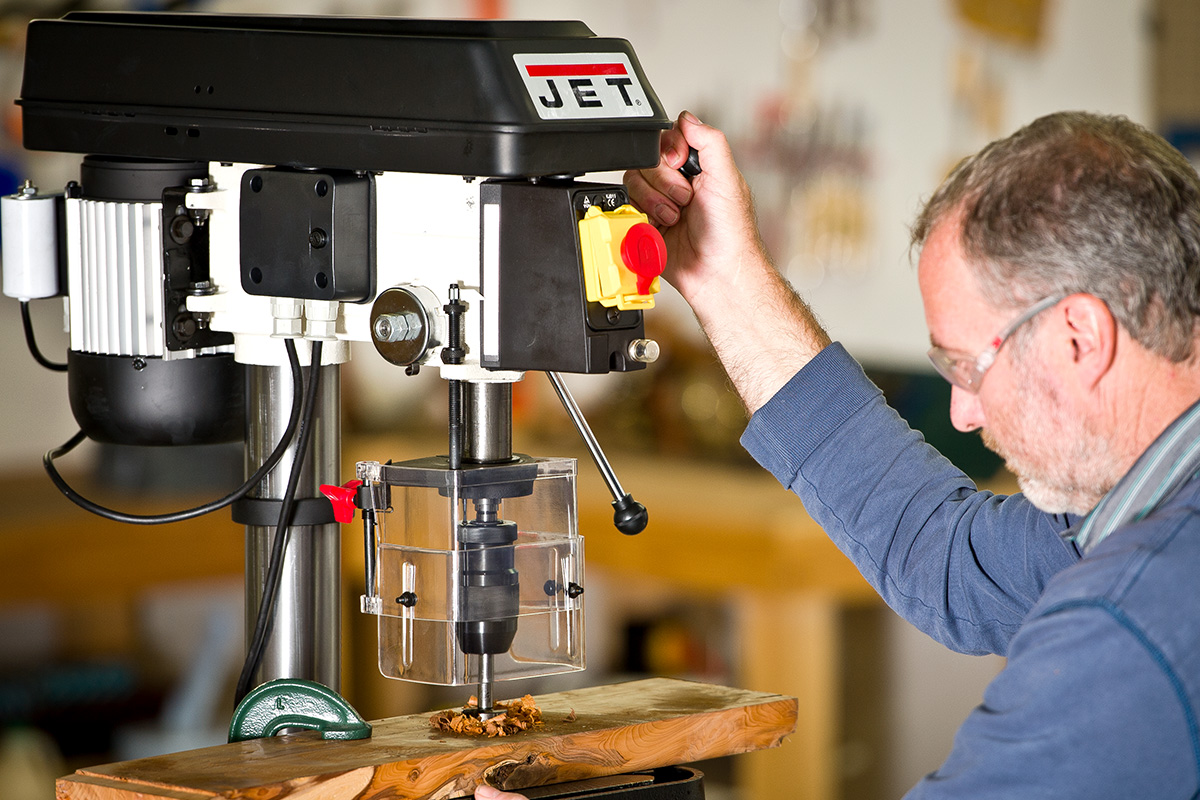
In the workshop, the ability to drill a hole which is dead square to the horizontal plane is crucial. Therefore, the pillar drill, is one of those essential pieces of equipment that must be included at the outset. As well as its primary function of drilling holes, the addition of optional attachments increases the versatility of the machine; for example, to cut mortices. Using a drum sander in the chuck will also enable the pillar drill to be turned into an effective sanding machine for concave curves.
This guide is designed to help you with your decision. It will look at considerations and key features, so you can find the right drill for you.
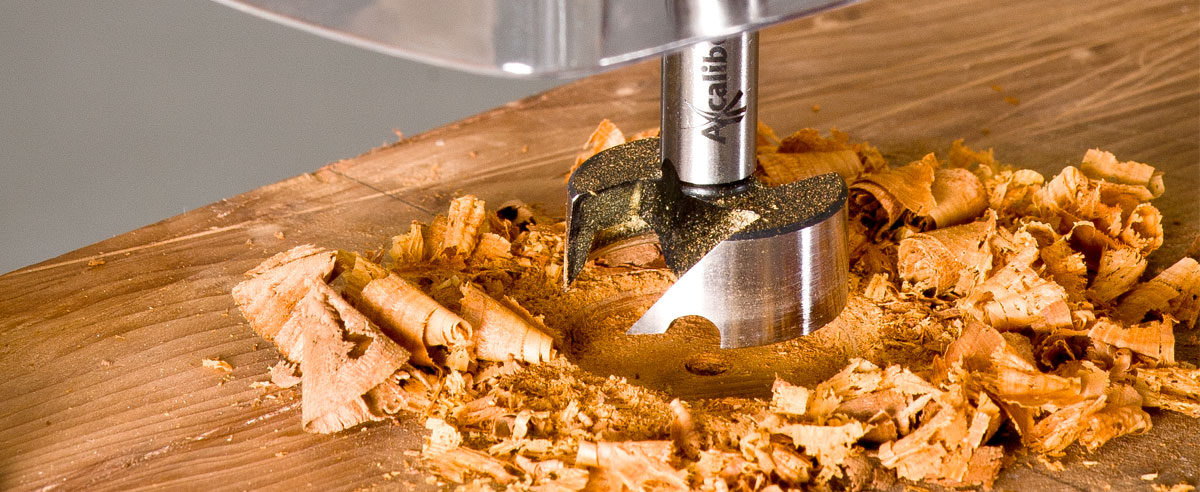
Considerations
The effective height of the machine is governed by the ‘chuck-to-table’ distance. This is the maximum dimension that can be fitted vertically under the chuck. A taller workpiece could be drilled, but this would entail moving the table through 90° in order for the workpiece to stand on the machined base. Similarly, the widest workpiece that can be drilled is determined by the ‘throat’ dimension, which is the distance from the centre of the chuck to the column. However, on certain machines, notably in the Hobby range, the head is able to tilt through a prescribed angle as well as slide back and forth. This greatly increases the ‘throat’ capacity and generally makes the machine more versatile. These are called radial pillar drills.
If the workpiece to be drilled is generally quite tall, then a floor standing drill is required. Conversely, smaller jobs may only require a bench mounted drill, which means that there is usually adequate storage room underneath. Bench mounted pillar drills are still very heavy and require a substantially constructed unit to support the weight. No matter what size drill you are buying we would strongly advise that they're assembled by more than one person!
Key Features of a Pillar Drill
The machines are relatively simple and are centred around a substantial steel column; onto one end is attached the motor, drive belt system and chuck. The other end of the column is securely located into a heavy cast iron base and between the two is the horizontal table. The table can be moved vertically by means of a rack and pinion mechanism operated by a convenient handle.
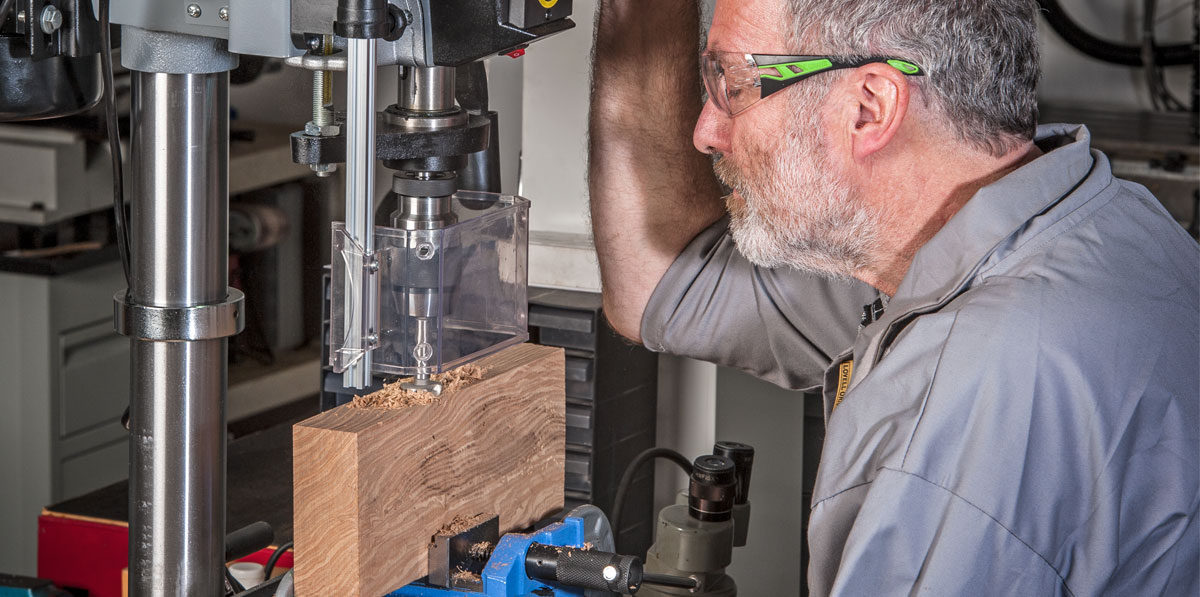
Motor & Drive Belt System
This unit is the cornerstone of all drilling machines and consists of an induction motor at the rear, situated behind the column with the chuck directly over the table. The chuck speed can be varied by lifting up the interlocked cover, releasing the tension on the drive belt which is then re-positioned over the most appropriate pulleys. Chuck speed is very important as different materials will require different speeds for optimum drilling. The chuck is contained in a precision machined quill within the headstock. There should be virtually no play in it even when extended out to three-quarters of its travel.
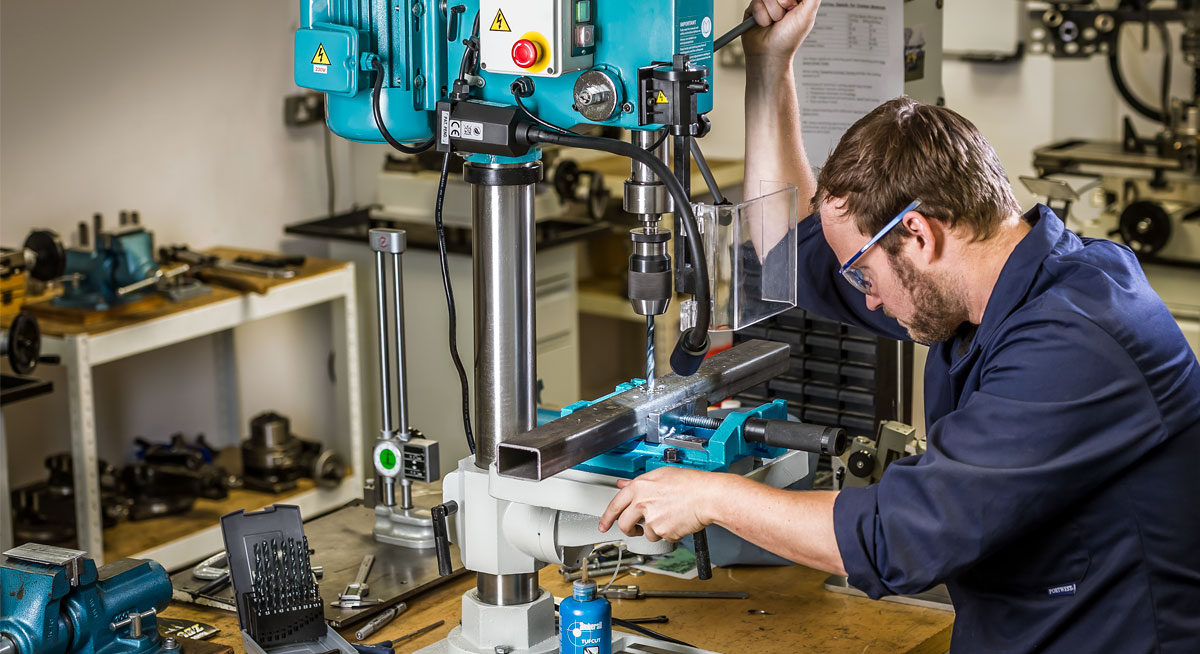
The Table
The surface ground table can be raised up and down the column by means of a rack and pinion mechanism. There is also an option on many machines to tilt it, which means that the workpiece can be drilled at an angle other than 90°. Many tables, particularly in the Trade and Engineer ranges, have grooves around the edge to enable coolant to drain away. All tables have diagonal slots or grooves allowing a machining vice or additional pillar drill table to be bolted to it.
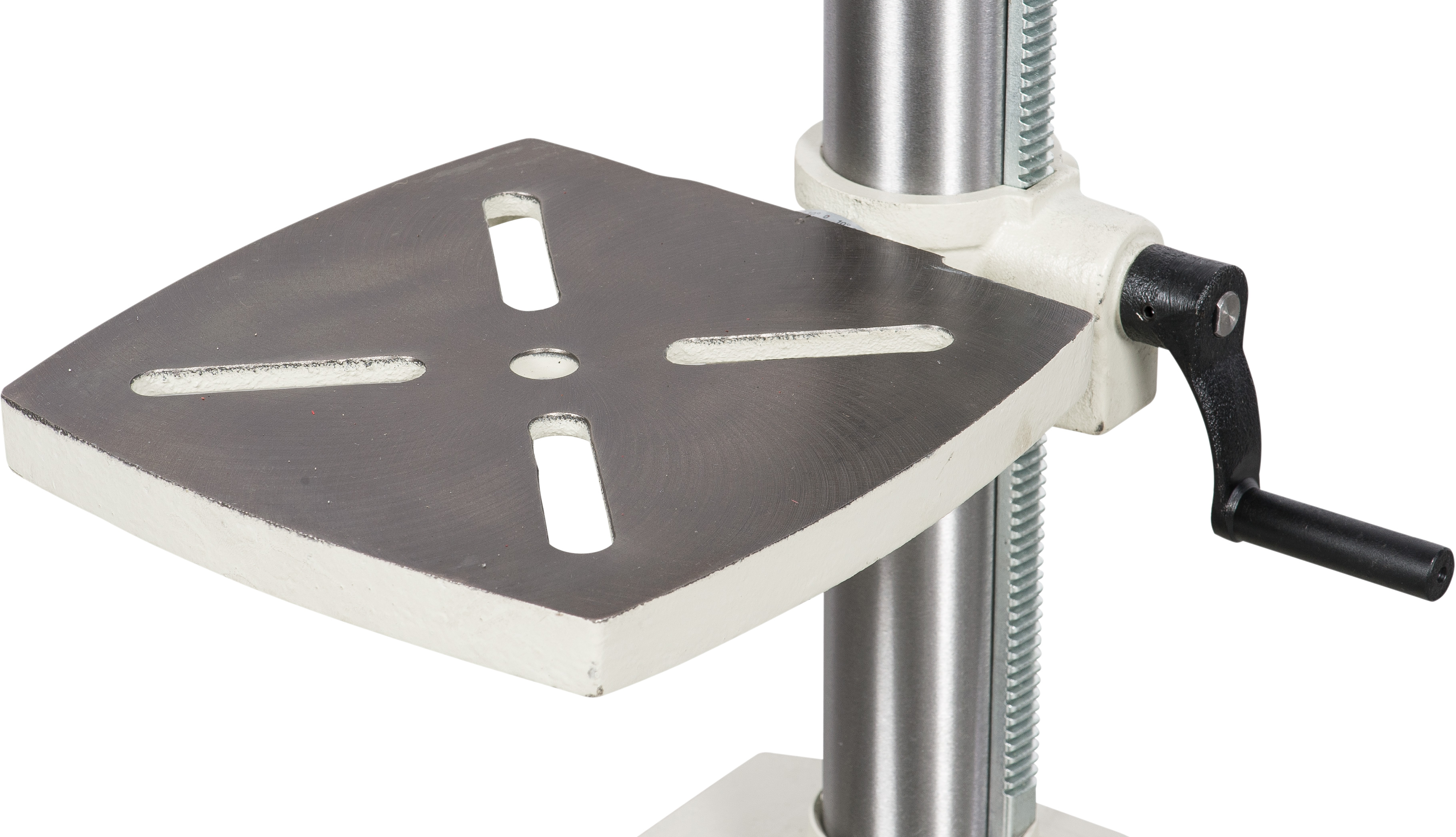
The Column
The column is a hollow cylinder of surface ground steel, ensuring that the table’s rise and fall is very smooth making the height adjustment a light task. The column should also be strong enough to maintain rigidity, therefore reducing vibration.
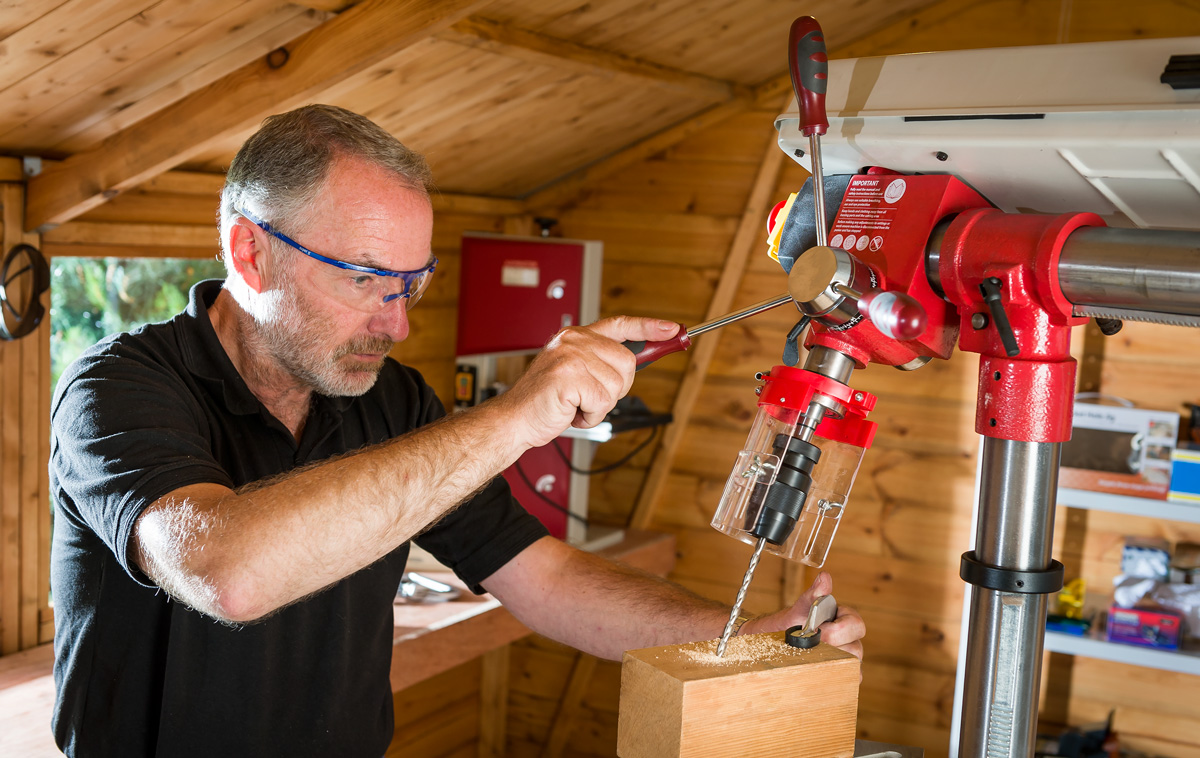
The Base
This is a robust, heavy piece of cast iron where a flat horizontal surface has been ground. Moving the table sideways allows a taller workpiece to be drilled by standing it in on the base. The casting for the column is bolted securely onto the base at the rear and there is also the facility to bolt the drilling machine to either a bench top or floor.
Conclusion
Adding a pillar drill to your workshop is something everyone should consider. With the ability to bore perfect holes, as well as many other tasks, it's very high on the list. Before you purchase one, there are many things to consider, not only with the machine but also your own circumstances. How deep are your drilling? What material are you using? To name a few. Once you can answer these questions and therefore know the features you need, the right drill should be just around the corner.




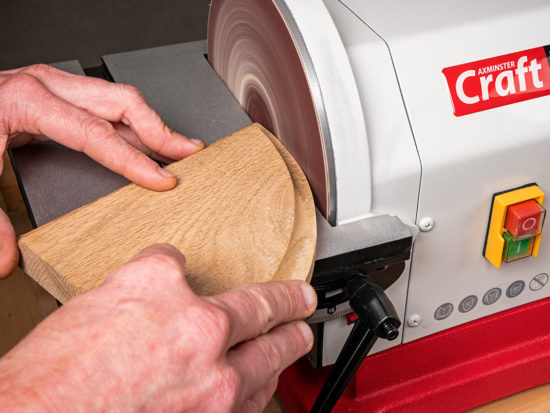
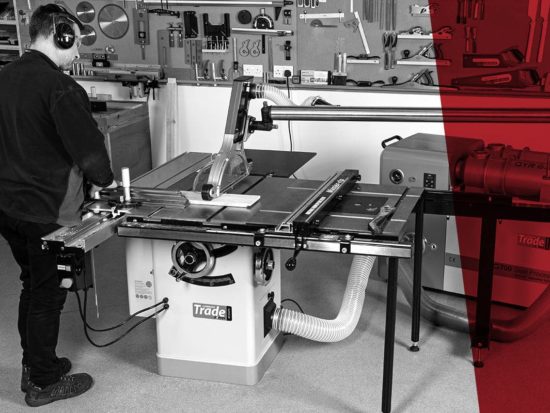

Hello
I wish to ask about a pillar drill(not professional)..The issue is about the column,which is 46mm diameter without rack an pinion mechanism. The column length is 42 cm.
Do you think there is any column with rack and pinion mechanism to replace mine on the dimensions I noticed? The table must be included. And in case this is possible let please know the price.
Thanks
This is a tricky one to answer, but thank you for your query and it would help us if you could indicate the current pillar drill that you own. At the moment, I can't recommend a solution to your problem, but as you're no doubt aware, we constantly update our machinery ranges so it's well worthwhile keeping an eye open on the website for a pillar drill to suit your requirements.
Hello,
I bought my first pillar drill nearly twenty years ago and from day one struggled with the concept of the table having to move up and down to the chuck. This means having to support sometimes large pieces at ever varying heights especially when there are varying diameter ( and consequently length) drill bits to be used.
My use is just serious DIY so I use it for metal and wood and virtually every time I am incensed by the issue. I have many times contemplated modifying mine to make a set up where the motor /chuck assembly rises off the bench top like my radial saw for example...........Then lo and behold Bosch (green) started marketing one. I haven't bought one yet because I figured all manufacturers would follow suit but from what I see it appears not.
Have Axminster considered the idea of developing such a machine?
I would be interested in hearing if anyone has any ideas why it wouldn't be a winner. Obviously I appreciate many people are happy with the rising table set up and that's fine, they have dozens of models from many manufacturers to choose from.
Mike Bonella
The table weighs less than the head which is usually about 30-50KG more than the table.. .! This means you would also need a gas ram to balance the head .! (£120 on top of cost)
Also the heads would have to be modified to allow the column to protrude through the pulley system.
I would suggest modifying the table to have the lock off and rise and fall handle at the front of the table underneath making it more accessible which would make it easier !
I cannot see for the life of me as an engineer why you would want the head to move up and down and the extra involved costs? It would be easier to buy a milling machine that allows such movement, but like I said much more expensive ! Regards Mark (Sheffield).
Hi, where do I find this jet bench mounted pillar drill??? I am presuming they still make and sell this model as the article is so recent.
Many thanks in advance.
Troy
I am looking for the pillar drill that will do all I want and the Hobby series all look fine, especially the radial model BUT all of the drills I have checked have a note saying they are not suitable for the morticing attachment: why? and which reasonably priced drill is suitable for mortice cuts?